Results 10,851 to 10,860 of 12096
Thread: Anandtech News
-
11-02-20, 02:01 PM #10851
Anandtech: A Broadwell Retrospective Review in 2020: Is eDRAM Still Worth It?
Intel’s first foray into 14nm was with its Broadwell product portfolio. It launched into the mobile market with a variety of products, however the desktop offering in 2015 was extremely limited - only two socketed desktop processors ever made it to retail, and in limited quantities. This is despite users waiting for a strong 14nm update to Haswell, but also because of the way Intel built the chip. Alongside the processor was 128 MB of eDRAM, a sort of additional cache between the CPU and the main memory. It caused quite a stir, and we’re retesting the hardware in 2020 to see if the concept of eDRAM is still worth the effort.
More...
-
11-03-20, 08:24 PM #10852
Anandtech: Kioxia Announces XD6 Datacenter SSDs: PCIe 4.0 and EDSFF At Scale
Kioxia (formerly Toshiba Memory) is announcing the new XD6 series datacenter NVMe SSDs, featuring PCIe 4.0 support and using the EDSSF E1.S form factors. The XD6 is Kioxia's first mass-produced product to use an EDSFF form factor, and may end up being one of the first widely-available products using an E1.S form factor.
Kioxia started their PCIe 4.0 transition earlier this year with the CD6 and CM6 NVMe SSDs, and also launched the related PM6 24G SAS SSD. Those drives are mostly designed for the storage appliance and traditional server markets, using the well-established 2.5" SSD form factor, supporting a broad range of capacities and endurance tiers and offering advanced features like dual-port support and multiple namespaces. The new XD6 series focuses more specifically on the hyperscale datacenter market and is based on a new controller architecture that is separate from that used in the CD6/CM6/PM6 family, but includes the same upgrade to 96L 3D TLC NAND flash memory.
Driven by the needs of hyperscalers like Facebook, the XD6 is tuned more for power efficiency than raw single-drive performance. The capacity options are more limited, and only one endurance tier (1 DWPD) is offered. Many of the more advanced reliability features like dual-port support and multiple sector sizes including Protection Information have been omitted, reflecting the fact that hyperscale datacenters apply the "cattle, not pets" mindset to entire racks or more—redundancy is managed in software on a broader scale, and it's not cost-effective at that scale to treat individual drives as mission-critical.
Compared to the previous-generation XD5 SSDs, the most obvious and significant change the XD6 brings is the switch from M.2 22110 and 2.5"/7mm U.2 form factors to EDSFF E1.S. The introduction of EDSFF to Kioxia's product line with the XD6 was hinted at in their roadmap over a year ago, but we didn't expect it to be such an aggressive transition: the M.2 option has been dropped and the 2.5" U.2 version will be launching after the EDSFF versions.
Hyperscalers are the main driving force behind the new EDSFF family of form factors, and within that market segment the EDSFF form factors are catching on quite well. Transitioning to PCIe Gen4-capable platforms also provides a convenient opportunity to adopt a new form factor that combines the density of M.2 with the hot-swappability and higher power support of U.2 drives. The XD6 uses the E1.S form factor (1U height, short length) with three different thicknesses: 9.5mm with a heatspreader case, and 15mm or 25mm with different heatsink sizes. All three versions of the XD6 use the same PCB and offer the same performance and power consumption; the different thickness options primarily trade off between density and airflow requirements.
[TABLE]
[TR="class: tgrey"]
[TD="colspan: 12, align: center"]Kioxia Enterprise and Datacenter NVMe SSD Specifications[/TD]
[/TR]
[TR="class: tlblue"]
[TD="class: tlgrey, colspan: 5"]Model[/TD]
[TD="align: center"]XD6[/TD]
[TD="colspan: 2, align: center"]XD5[/TD]
[TD="colspan: 2, align: center"]CD6[/TD]
[TD="colspan: 2, align: center"]CM6[/TD]
[/TR]
[TR]
[TD="class: tlgrey, colspan: 5"]Form Factor[/TD]
[TD="align: center"]EDSFF E1.S:
9.5mm,
15mm,
or 25mm
(U.2 later)[/TD]
[TD="align: center"]2.5" 7mm
U.2[/TD]
[TD="align: center"]M.2
22110[/TD]
[TD="colspan: 4, align: center"]2.5" 15mm U.3[/TD]
[/TR]
[TR]
[TD="class: tlgrey, colspan: 5"]Interface, Protocol[/TD]
[TD="align: center"]PCIe 4 x4
NVMe 1.3c[/TD]
[TD="colspan: 2, align: center"]PCIe 3 x4
NVMe 1.2.1[/TD]
[TD="colspan: 4, align: center"]PCIe 4 x4
NVMe 1.4[/TD]
[/TR]
[TR]
[TD="class: tlgrey, colspan: 5"]NAND Flash[/TD]
[TD="align: center"]96L 3D TLC[/TD]
[TD="colspan: 2, align: center"]64L 3D TLC[/TD]
[TD="colspan: 4, align: center"]96L 3D TLC[/TD]
[/TR]
[TR]
[TD="class: tlgrey, colspan: 5"]Capacities (TB)[/TD]
[TD="align: center"]
1.92 TB
3.84 TB[/TD]
[TD="align: center"]960GB
1.92TB
3.84TB
[/TD]
[TD="align: center"]
1.92TB
3.84TB[/TD]
[TD="colspan: 1, align: center"]960GB
1.92TB
3.84TB
7.68TB
15.36TB[/TD]
[TD="align: center"]800GB
1.6TB
3.2TB
6.4TB
12.8TB[/TD]
[TD="colspan: 1, align: center"]960GB
1.92TB
3.84TB
7.68TB
15.36TB
30.72TB[/TD]
[TD="align: center"]800GB
1.6TB
3.2TB
6.4TB
12.8TB[/TD]
[/TR]
[TR]
[TD="class: tlgrey, colspan: 5"]Write Endurance (DWPD)[/TD]
[TD="align: center"]1[/TD]
[TD="align: center"]1[/TD]
[TD="align: center"]
-
11-05-20, 03:21 PM #10853
Anandtech: AMD Zen 3 Ryzen Deep Dive Review: 5950X, 5900X, 5800X and 5600X Tested
When AMD announced that its new Zen 3 core was a ground-up redesign and offered complete performance leadership, we had to ask them to confirm if that’s exactly what they said. Despite being less than 10% the size of Intel, and very close to folding as a company in 2015, the bets that AMD made in that timeframe with its next generation Zen microarchitecture and Ryzen designs are now coming to fruition. Zen 3 and the new Ryzen 5000 processors, for the desktop market, are the realization of those goals: not only performance per watt and performance per dollar leaders, but absolute performance leadership in every segment. We’ve gone into the new microarchitecture and tested the new processors. AMD is the new king, and we have the data to show it.
More...
-
11-05-20, 03:21 PM #10854
Anandtech: The Xbox Series X Review: Ushering In The Next Generation of Game Consoles
What makes a console generation? The lines have been blurred recently. We can state that the Xbox Series X, and its less-powerful sibling, the Series S, are the next generation consoles from Microsoft. But how do you define the generation? Just three years ago, Microsoft launched the Xbox One X, the most powerful console in the market, but also with full compatibility with all Xbox One games and accessories. With multiple tiers of consoles and mid-generation refreshes that were significantly more powerful than their predecessors – and in some cases, their successors – the generational lines have never been this blurred before.
None the less, the time for a “proper” next generation console has finally arrived, and Microsoft is fully embracing its tiered hardware strategy. To that end, Microsoft is launching not one, but two consoles, with the Xbox Series X, and the Xbox Series S, each targeting a difference slice of the console market both in performance and price. Launching on November 10, 2020, the new Xboxes bring some serious performance upgrades, new designs, and backwards compatibility for not only the Xbox One, but also a large swath of Xbox 360 games and even a good lineup of games from the original 2001 Xbox. The generational lines have never been this blurred before, but for Microsoft the big picture is clear: it’s all Xbox.
More...
-
11-09-20, 06:53 AM #10855
Anandtech: MSI Confirms Fire at PCB Factory in Bao’an, China
After initial reports through third-party sources on social media, MSI has confirmed to AnandTech that there has been an incident at one of its largest manufacturing facilities in Bao’an, China. MSI reports that no injuries were caused, and no damage was done to any production lines. This facility/factory is responsible for manufacturing PCBs for a wide range of components, including (but not limited to) motherboards, graphics cards, laptops, servers, small-form-factor devices, and industrial installations.
MSI confirmed that the a large amount of smoke was generated at the Bao'an facility on the afternoon of November 5th. The company also states that emergency measures were enacted, and the fire department was called out and able to get the incident under control. MSI claims that no production lines were damaged in the incident, and there should not be any issues with future production. We suspect that there shouldn't be any issues with storage/stock/distribution of models either, however usually with an incident like this, investigations happen and extra training is enacted, which may have knock on effects to production.
The Bao’an facility is one of a number of locations that MSI uses for its components. For example, notebooks and pre-built desktops are assembled in Shanghai, but those require components from elsewhere. A video was posted to Reddit showing the extent of the fire.
It should be noted that supply of RTX and Radeon GPUs that are due for sale over the next few weeks are likely to already be in the distribution channel. So if there is any hiccup in production (MSI says there won't be), it would more likely be seen around a month from now. However, that won't stop the company potentially redirecting stock to its higher margin markets if needed.
We have reached out to MSI for more information, with an expected official statement to follow.
More...
-
11-09-20, 11:32 AM #10856
Anandtech: Razer Book 13: It’s a 4K 16:10 Notebook, with 3840x2400 Resolution!
According to Razer, among the top requests from its users (aside from a toaster) is a more work-focused commercial style product using the same design identity as its popular Razer Blade and Blade Stealth series. Despite this going against the grain of the ‘gamer’ ethos that Razer is fond of, the company has finally let loose with its first generation Razer Book like – aimed specifically at users who want the Razer design and feel, but aimed at workflow rather than specifically for gaming. The cherry on top is the display.
More...
-
11-09-20, 04:21 PM #10857
Anandtech: Micron Announces 176-layer 3D NAND
Just in time for Flash Memory Summit, Micron is announcing their fifth generation of 3D NAND flash memory, with a record-breaking 176 layers. The new 176L flash is their second generation developed since the dissolution of Micron's memory collaboration with Intel, after which Micron switched from a floating-gate memory cell design to a charge-trap cell. Micron's previous generation 3D NAND was a 128-layer design that served as a short-lived transitional node for them to work out any issues with the switch to charge trap flash. Micron's 128L flash has had minimal presence on the market, so their new 176L flash will in many cases serve as the successor to their 96L 3D NAND as well.
Micron is still withholding many technical details about their 176L NAND, with more information planned to be shared at the end of the month. But for now, we know their first 176L parts are 512Gbit TLC dies, built using string stacking of two 88-layer decks—Micron would seem to now be in second place behind Samsung for how many layers of NAND flash memory cells they can fabricate at a time, and clearly in first place for the total number of layers on a die.
The switch to a replacement gate/charge trap cell design seems to have enabled a significant reduction in layer thickness: the 176L dies are 45µm thick, about the same total thickness as Micron's 64L floating-gate 3D NAND. A 16-die stacked package comes in at less than 1.5mm thick, suitable for most mobile and memory card use cases. As with previous generations of Micron 3D NAND, the chip's peripheral logic is mostly fabricated under the NAND memory cell stacks, a technology Micron calls "CMOS under Array" (CuA). This has repeatedly helped Micron deliver some of the smallest die sizes, and Micron estimates their 176L 512Gbit die is about 30% smaller than the best their competitors currently offer.
The 176L NAND supports an interface speed of 1600MT/s, up from 1200MT/s for their 96L and 128L flash. Read and write (program) latency are both improved by over 35% compared to their 96L NAND, or by over 25% compared to their 128L NAND. Micron cites an overall mixed workload improvement of about 15% for compared to their UFS 3.1 modules using 96L NAND.
Micron's 176L 3D NAND has already started volume production and is shipping in some Crucial-branded consumer SSD products. However, Micron hasn't specified which specific Crucial products are now using 176L NAND (or their 128L NAND, for that matter), so we expect that this is a fairly low-volume release for now. Still, over the next year we should 176L NAND production ramp up to higher volumes than their 128L process ever reached, and we can expect a wide range of products based on this 176L NAND to be released and replace most of what's using their 96L NAND.
More...
-
11-09-20, 08:34 PM #10858
Anandtech: Kioxia Announces XG7 PCIe 4.0 Client SSDs
Last week, Kioxia rounded out their lineup of PCIe 4.0 enterprise and datacenter SSDs with the announcement of the XD6. Now, they're bringing PCIe 4.0 support to their client NVMe product line with the new XG7 and XG7-P M.2 NVMe SSDs. The XG7 family doubles the sequential read speed and increases sequential write speed by 60% compared to the XG6 series, thanks to the PCIe 4.0 support and a new SSD controller. Based on XG6 specs, this should be at least 6.3GB/s reads and 4.6GB/s writes for the XG7. That's may not be quite fast enough for high-end consumer SSDs sold at retail, but for an OEM-only client SSD it's still extremely fast.
For the first time, Kioxia (formerly Toshiba Memory) is introducing the higher performance/higher capacity -P models at the same time as the base models in their XG series. The XG7 will be available in capacities from 256GB to 1TB, and the XG7-P will offer 2TB and 4TB capacities. This likely makes the XG7-P the first client OEM SSD to add a 4TB NVMe option.
Full performance specs for the XG7(-P) family have not yet been announced, but in terms of features Kioxia is implementing NVMe 1.4 support and TCG Opal and TCG Pyrite security options. The XG7 and XG7-P will start appearing in pre-built systems in 2021. Unlike the past two generations, we're not getting review samples of the XG7, so we'll have to wait until next year to get first-hand experience with Kioxia's PCIe 4.0 solution.
More...
-
-
11-10-20, 12:44 PM #10860
Anandtech: Compute eXpress Link 2.0 (CXL 2.0) Finalized: Switching, PMEM, Security
One of the more exciting connectivity standards over the past year has been CXL. Built upon a PCIe physical foundation, CXL is a connectivity standard designed to handle much more than what PCIe does – aside from simply acting as a data transfer from host to device, CXL has three branches to support, known as IO, Cache, and Memory. As defined in the CXL 1.0 and 1.1 standards, these three form the basis of a new way to connect a host with a device. The new CXL 2.0 standard takes it a step further.
CXL 2.0 is still built upon the same PCIe 5.0 physical standard, which means that there aren’t any updates in bandwidth or latency, but adds some much needed functionality that customers are used to with PCIe. At the core of CXL 2.0 are the same CXL.io, CXL.cache and CXL.memory intrinsics, dealing with how data is processed and in what context, but with added switching capabilities, added encryption, and support for persistent memory.
More...
Thread Information
Users Browsing this Thread
There are currently 53 users browsing this thread. (0 members and 53 guests)





 Quote
Quote
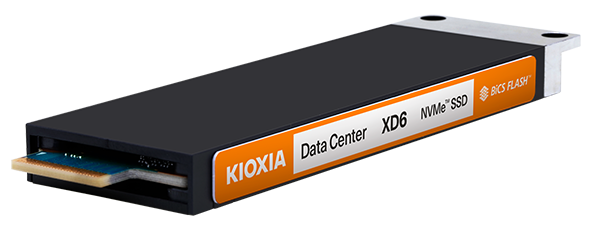

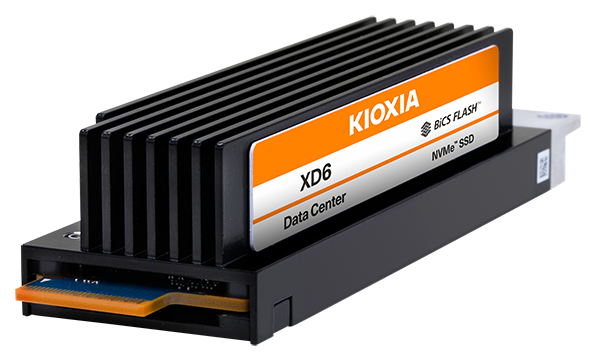

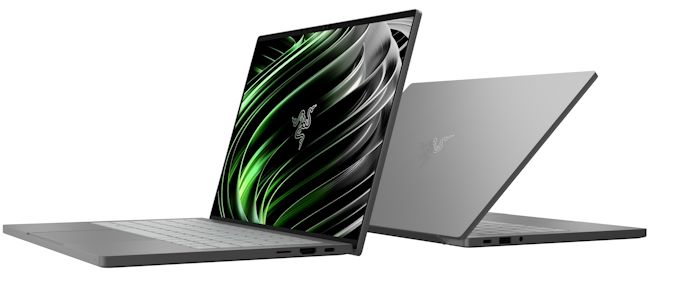
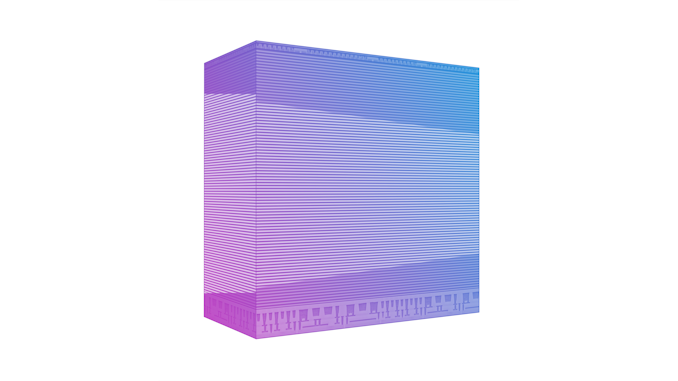
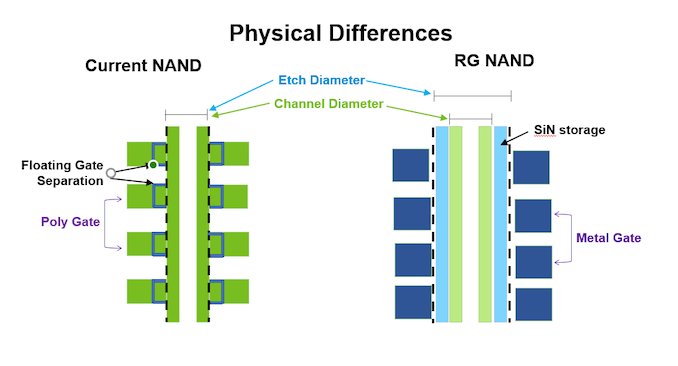
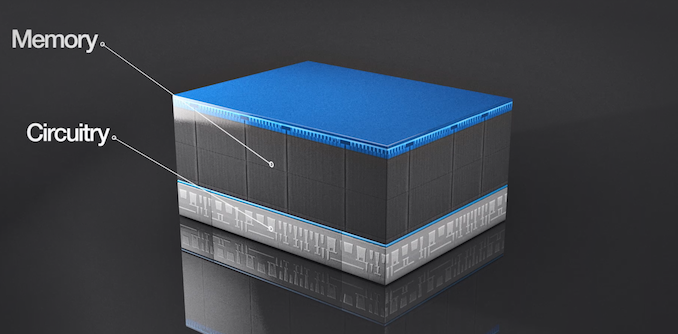
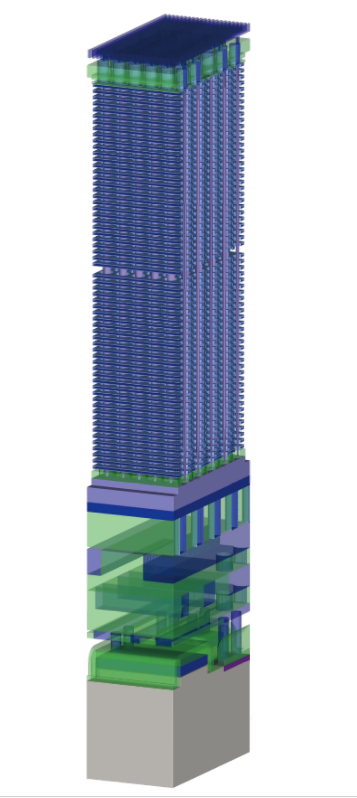


















Bookmarks